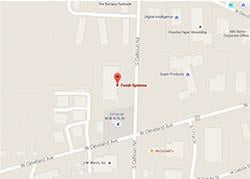Free Shipping on Orders Over $299 (Restrictions Apply)
Air Assist Airless (AAA) Technology spray guns
Air-Assisted Airless (Mix) Spray Gun
Air-Assisted Airless Technology Info
Air-Assisted Airless Atomization
In the 1970's, various combinations of spraying systems emerged. Air-assisted airless was one that developed to fill a need that resulted from escalated material costs and newly enacted Environmental Protection Agency (EPA) regulations. Air-assisted airless, under ideal conditions, combines the best features of air spray along with the best of airless.
Air-assisted airless spray guns first partially atomize the fluid with a special fluid nozzle tip similar to a standard airless tip. Second, they complete the atomization with small amounts of compressed air from the face and/or the horns of the air nozzle that they use. The result is a finely atomized spray pattern closely resembling that of a compressed air system. Newly designed low-pressure, air-assisted airless systems are also available. Some systems restrict the atomizing air pressure to comply with various EPA guidelines; as a result, these systems can be considered HVLP air-assisted airless.

Advantages
The primary advantage of air-assisted airless is its "soft" spray atomization. Atomization air pressures are usually low (under 20 psi) and as a result, this system provides a fine finish with most coatings approaching that of compressed-air atomization. With air-assisted airless we can see an approximate 30% improvement in transfer efficiency over compressed air. This system allows us to increase flow rates, while also spraying into recesses and cavities, without excessive bounce-back of material. This means less booth maintenance and cleanup time. We also can expect a reduction in compressed-air supply requirements. Since fluid pressures generally range from 200-800 psi, less wear on the pump and tip is to be expected.
Disadvantages
Tip plugging with .007 to .011 orifice size can occur with air-assisted airless. Tip plugging usually occurs with pigmented coatings and for easy unclogging reversible tips are available. In 2004 Twin Tip Reversible Tips have entered the market. This design pre-atomizes and then provides final hydraulic atomization which results in reduced pump and assisted air pressures. Also, this twin tip provides both narrow and wide patterns by turning the tip 180°.
Some operators tend to use excessive fluid and air pressures with this process which defeats the excellent transfer efficiency of AAA systems. There are more controls to learn to use correctly.
